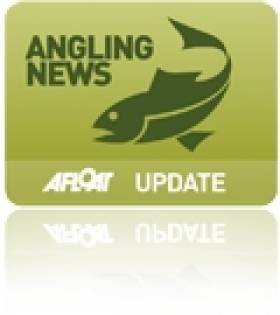Displaying items by tag: Inniscarra
Phillip Doherty and Ethel Bateman Top in Second Round of the Cork Laser Triseries event at Iniscarra
The second event in the Cork Laser/ILCA sprint Tri-series was held at Iniscarra Sailing and Kayaking Club, on Sunday, September 4th. Summer had truly finished and a fresh South Easterly wind was sweeping along with heavy showers up the lake from the direction of the Iniscarra dam.
From the outset of the tri-series concept, it was always an interesting proposition to have a sprint race on this underappreciated body of water. The lake does have its challenges with no possibility of seabreeze and a dry summer leading to low water levels.
However, commodore Aoife Herlihy pulled together a very strong team to pull together all logistics to host the second event in the sprint series. Race Officer John Corkery managed a to find a significant upwind leg which really challenged the fleet searching for dramatic wind shifts.
A pathway along the northern shore of the lake allowed for fantastic close quarter viewing especially on the downwind leg. The lack of any swell with a building breeze highlighted some excellent pursuits to the leeward buoy. The format of the sprint can mean very tight racing in a single lap and on the third race a near pileup of four boats screamed into the leeward mark roared on from the supporters on the shore.
Some mistimed flips cost a few sailors a podium finish. Isabel McCarthy in her ILCA 4 was leading all bar one of the ILCA 6s at the leeward before a strong gust flattened her chances. Joe O'Sullivan won out the first sprint of the day in his ILCA 6, but then Phillip Doherty dominated the next two races.
From near flat calm conditions at 9am, the wind built all day and after seeing gusts above 30 kts, the race officer called a halt after three exciting races. With over twenty boats competing on the day split near evenly across ILCA 4 and 6, it was a busy day and a bbq afterwards allowed the spectators and organizing team some time to debrief the events of the day.
It was Iniscarra Sailing and Kayaking club's first ever experience of hosting an external race like this and they put on an enviable event from start to finish. John Corkery’s race course, which was a challenge to setup for an all in twenty boat start was a great success with the racing dynamics closely watched from the lakeside onshore.
At the end of three races, in ILCA 6 Phillip Doherty (Monkstown Bay Sailing Club) came out first with Joe O'Sullivan 2nd and Andrew Kingston 3rd (both RCYC) . In ILCA4, Ethel Bateman came out in front of Liam Duggan in 2nd and Eve McCarthy 3rd (all RCYC)
The series will conclude with another set of five sprints in Royal Cork Yacht Club on September 18th and as Afloat previously reported, the Tri-Series is open to all, https://www.royalcork.com/ilca-sprint-tri-series/ . Laser class captain Tim McCarthy is hoping for thirty boats to compete on the day with many sailors competing for the series title also.
Latest results after eight races in the series can be found below
Inniscarra To Host 2017 Youth Angling Worlds
#Angling - Following the news that Ireland's bronze-winning anglers will host next year's Shore Angling Worlds in Wexford comes confirmation that the FIPS-ed Youth Worlds will be held in Cork in 2017.
According to The Corkman, more than 40 teams from around the globe will make the trip to Coachford for the championships that will be fished on Inniscarra Reservoir.
And it's set to be the biggest world championship angling event ever staged in Ireland, says National Coarse Fishing Federation of Ireland (NCFFI) president Der Casey.
The Corkman has more on the story HERE.
Ireland's Anglers Score First Medal On World Stage
#Angling - Following Team Ireland's gold-medal performance at the 2014 Shore Angling Home Nations Internationals earlier this month comes news of Irish anglers' first medal at world championship level in the Feeder Worlds in Co Cork last week.
The Irish claimed silver on home turf in the fourth World Feeder Championships at Inniscarra just behind favourites England in a competitive field comprising 125 anglers from 25 countries, according to the Belfast Telegraph.
Ireland also topped the table for heaviest individual catch thanks to Richard Pratt's 20.176kg haul on the first day of fishing.
The Belfast Telegraph has much more on the story HERE.





























































